
by admin | Oct 16, 2020 | Alzheimer’s Disease, Stem Cell Research, Stem Cell Therapy
Alzheimer’s disease is the most common form of dementia. Among other symptoms, Alzheimer’s disease causes memory loss as nerve cells in the brain become dysfunctional and die. While the disease is known to be related to the accumulation of β-amyloid plaques and neurofibrillary tangles, how and why those things happen is still a mystery. Nonetheless, researchers have created and tested drugs to change the way the brain process β-amyloid and hyperphosphorylated tau (the substance in neurofibrillary tangles) but nothing, so far, has worked in humans. Instead, we are left with anticholinergic drugs, and memantine used to slow the progression of the disease.
These failures of drug development have forced scientists to reconsider how to treat Alzheimer’s disease. Instead of a focus on neuropathology that we cannot understand or control, why not focus on supporting nerve cells that remain or even restore the nerve cells that are lost? This is the hope of stem cell research in Alzheimer’s disease, and the focus of an extensive review article on the subject.
The review article describes the clinical possibilities of different types of stem cells:
- Neural stem cells (NSCs)
- Mesenchymal stem cells (MSCs)
- Induced pluripotent stem cells (iPSCs)
Neural stem cells (NSCs)
NSCs have the magnificent ability to become any type of brain cell, be they neurons or various types of glia. NSCs would be the ideal stem cell treatment for Alzheimer’s disease except for one major problem: There are very, very few NSCs in the human brain. It is nearly impossible to harvest them in high enough numbers and, right now, we don’t have ideal ways to make them multiply and grow in a laboratory. So, while research in NSCs for the treatment of Alzheimer’s disease is well underway, they won’t be widely available any time soon.
Mesenchymal stem cells (MSCs)
Mesenchymal stem cells can become many different types of cells and can be harvested from many places including bone marrow, umbilical cord, and adipose (fat). MSCs are very versatile, and we are improving at safely using them in various diseases, including Alzheimer’s disease. MSCs are one of the more exciting avenues of research in Alzheimer’s disease and other neurodegenerative diseases.
Induced pluripotent stem cells (iPSCs)
iPSCs are a remarkably interesting type of stem cell. They are stem cells that are created by reprogramming cells found in the skin (fibroblasts) to become other cells of interest. Researchers take fibroblasts and genetically alter them to behave like other types of stem cells or fully differentiated cells. Recent work has shown that scientists can repurpose iPSCs to become neural precursor colonies, which are a lot like NSCs described above. If one could take iPSCs from the skin and convert them into NSCs, this could truly be a treatment for Alzheimer’s disease.
Stem cell treatments provide the promising potential to help those with Alzheimer’s disease and other neurodegenerative diseases. While research is ongoing, the breakthroughs that have been recently discovered provide hope to those seeking an alternative option.
Reference: Lee, J. H., Oh, I. H., & Lim, H. K. (2016). Stem Cell Therapy: A Prospective Treatment for Alzheimer’s Disease. Psychiatry Investigation, 13(6), 583–589. https://doi.org/10.4306/pi.2016.13.6.583

by admin | Oct 6, 2020 | ALS, Stem Cell Research, Stem Cell Therapy
ALS, which stands for amyotrophic lateral sclerosis, is a neurodegenerative disease that has no cure and no substantially effective treatment. Today, there are two drugs available that can slow the progression of ALS— riluzole and edaravone—but these agents may only be modestly effective. Sadly, patients with ALS get progressively worse, sometimes even with treatment. They lose to ability to move, to swallow, and to breathe. It is a devastating disease.
As with other neurodegenerative diseases, researchers are trying to treat ALS with stem cells. Stem cells have the capacity to become other types of cells such as neurons or glia. The notion is that stem cells could be used to rescue and replenish the nerve cells that are dysfunctional or destroyed in ALS. Studies are emerging that suggest that these approaches may bear fruit.
One such stem cell trial comes out of India, published by Dr. Prabhakar and colleagues. The research scientists infused autologous bone marrow-derived stem cells (autologous means the cells were retrieved from the patient and then readministered to the same patient). The scientists conducted the clinical study in ten patients with ALS who had a mean revised ALS Functional Rating Scale score of 30.2 ± 10.58. In other words, patients with this score have about a 60 to 70% chance of being alive for 9 more months.
Impressively, patients treated with autologous bone marrow-derived stem cells did not have a significant reduction in ALS Functional Rating Scale score after one year, which means their disease stayed relatively stable over this time instead of deteriorating. It took about 16.7 months for the score on this scale to drop by 4 points, which is considered a significant drop. The median survival after the procedure was 18.0 months, which is substantially more than would have been expected at the start of the study.
Taken together, these results suggest that patients with moderately severe ALS enjoyed a stabilization of their ALS symptoms for over 16 months on average. While there was no placebo control group, the stem cell-treated patients survived about twice as long as was estimated at the start of the trial.
These positive results must be confirmed in a larger, placebo-controlled trial. However, they strongly argue for further research of stem cells for the treatment of amyotrophic lateral sclerosis.
Reference: Prabhakar S, Marwaha N, Lal V, Sharma RR, Rajan R, Khandelwal N. Autologous bone marrow-derived stem cells in amyotrophic lateral sclerosis: A pilot study. Neurol India 2012;60:465-9

by admin | Jun 25, 2020 | Neurodegenerative Diseases, Mesenchymal Stem Cells, Stem Cell Research
As the name suggests, neurodegenerative diseases are a disease of the nervous system in which nerve cells (i.e. neurons) become dysfunctional and die. As more nerve cells die, certain brain functions slow, change or stop. Alzheimer’s disease, Parkinson’s disease, Huntington’s disease and Amyotrophic lateral sclerosis (ALS) are examples of debilitating and even fatal neurodegenerative diseases. There are no cures for these diseases, but symptom management is the primary focus for patients seeking treatment options.
Neurodegenerative diseases are an attractive target for regenerative medicine. The approach makes sense intuitively; if brain cells are inflamed, dysfunctional, and dying, can mesenchymal stem cells be applied as a targeted approach so that they may differentiate into new brain cells and release all the helpful substances stem cells are known to release. Many researchers share this optimism and believe in the promise of stem cells as a treatment for neurodegenerative diseases. Indeed, Drs. Joyce and coauthors discuss what steps have already been taken to develop stem cells into a potential treatment for neurodegenerative diseases.
The authors describe scientific studies that show how mesenchymal stem cells “promote endogenous neuronal growth, decrease apoptosis and regulate inflammation.” In other words, stem cell transplantation supports nerve cell growth, decreases cell death, and reduces the damaging inflammation that is seen in some neurodegenerative diseases like multiple sclerosis.
According to the scientists, stem cells “can mediate modification of the damaged tissue microenvironment to enhance endogenous neural regeneration and protection.” This means that stem cells can make the area around the diseased brain more favorable to nerve cell growth and development. Stem cells create a protective environment for nerve cells to live and operate.
Clinical trials that study the effects of stem cells in neurodegenerative diseases are progressing. Some studies show that stem cells might be able to slow the rate at which muscle strength declines and are considered safe for those with ALS. Likewise, patients with Huntington’s disease showed motor and cognitive improvements two years after receiving a stem cell transplant into the damaged region of their brains. Moreover, stem cells transplanted into patients with Parkinson’s disease were found to be alive and well 10 years after transplantation. Perhaps more importantly for patients, stem cells provided relief of Parkinson’s disease symptoms.
As of now, stem cell treatments for neurodegenerative diseases can be directed to the targeted tissues with administration techniques such as intranasal or intrathecal injections to bypass the blood-brain barrier. While these injections have been shown time and again to be safe, patients and their providers must consider the process and their safety. Continued research is ongoing and those seeking an alternative option should do their research and discover how regenerative medicine may potentially help them manage their symptoms.
Reference: Joyce, N., et al. (2010). Mesenchymal stem cells for the treatment of neurodegenerative disease. Regenerative Medicine. 2010. Nov; 5(6): 933-946.

by admin | Jun 24, 2020 | ALS, Stem Cell Research
ALS, also known as amyotrophic lateral sclerosis or Lou Gehrig’s disease, is a progressive neurologic condition. There is no current cure for this condition and the only treatments, riluzole and edaravone, are only modestly effective at slowing the disease.
This lack of a cure or effective treatment for ALS is not for a lack of trying. There have been countless clinical trials to test treatments for ALS—almost all have ended in failure in Phase 1 or Phase 2 clinical trials. Indeed, few potential ALS treatments make it to Phase 3 trials—the final stage of clinical testing before a drug is approved by the FDA for treatment.
It is this history of failure that has sparked so much enthusiasm in a new stem cell treatment for ALS. The potential stem cell treatment for ALS is currently known by its development name, NSI-566. NSI-566 is made up of neural stem cells—cells that can become new motor neurons. NSI-566 is injected into the spinal column of patients with ALS so that the stem cells can hopefully restore motor function and improve ALS symptoms.
The Phase 1 study showed a spinal injection of NSI-566 was safe in ALS patients, a finding that was confirmed in the Phase 2 trial. Perhaps more importantly, results from the Phase 2 trial showed that patients who received stem cell treatment did substantially better 24 months later than those who received a placebo. These results were so encouraging, that NSI-566 now heads to Phase 3 clinical testing.
While it will take some time to conduct the Phase 3 clinical trial, reaching this milestone is an achievement in itself. Any Phase 3 trial design will require a relatively large number of patients, so those who are interested should occasionally check clinicaltrials.gov or speak to your neurologist about enrolling as a volunteer.
Reference: Goutman, S., et al. (2018). Long-term Phase 1/2 intraspinal stem cell transplantation outcomes in ALS. Annals of Clinical and TranslationalNeurology 2018; 5(6): 730–740

by admin | May 5, 2020 | Osteoarthritis, Stem Cell Research
Osteoarthritis of the hip is a painful condition that can interfere with leg movement and diminish the quality of life. In some, the symptoms are mild, but in others, osteoarthritis can be severe and can even lead to joint failure. Pain is often intermittent in early stages, but in later stages, the pain can be constant with periods of sharp, intense pain. The hip joint becomes stiff and unstable, making it difficult to move around and greatly increasing the risk of falls.
Unfortunately, there are few effective treatments for osteoarthritis of the hip. Management includes pain control with non-steroidal anti-inflammatory drugs and physical therapy. Steroid injections into the hip are not as effective as they are for knee osteoarthritis, so many doctors hesitate to perform them. Joint supplements such as glucosamine and chondroitin are unlikely to be very effective—clinical trials have not provided evidence that they actually work. The definitive treatment for hip osteoarthritis is hip replacement surgery, which is expensive and associated with a long period of recovery.
The main problem in osteoarthritis is that the joint breaks down over time from wear and tear (i.e. microtraumas). At the same time, the joint has a very limited capacity to heal itself. In other words, once the joint breaks down, it pretty much stays that way. Since life is a series of joint microtraumas, the hip gets progressively worse. Indeed, one in four people will have painful osteoarthritis of the hip by age 85, and hundreds of thousands will have it earlier in life.
Scientists have long wanted to find ways to help the body regenerate the joint substances, particularly joint cartilage. Unfortunately, the joint does not receive good blood supply and no known drug or supplement can actually rebuild joint cartilage. That is the main reason researchers are aggressively testing stem cells as a treatment for hip osteoarthritis.
Mesenchymal stem cells have the potential to become many different types of cells, including chondrocytes (cartilage cells). Mesenchymal stem cells sense the environment they are in and then become the cell consistent with that environment. So, the theory goes, injecting mesenchymal stem cells into the hip joint can prompt them to become hip joint cells (chondrocytes).
Researchers tested this hypothesis in a clinical study. They injected mesenchymal stem cells taken from fat tissue (i.e. adipose) and injected them into the hip joints of people with difficult-to-treat hip osteoarthritis. They compared the patients’ Harris Hip scores (HHS) before and 6 months after treatment. HHS is a reliable way to assess the severity of osteoarthritis symptoms. An HHS score of less than 70 is “poor” and a score of 80 to 90 is “good.” Before stem cell treatment, patients had an average HHS score of 67.2±3.4 and 84.6±6.3 afterward. Scores also improved in other tests including WOMAC and Visual Analogue Scale. In other words, mesenchymal stem cell treatment reduced pain and improved joint function in these patients compared to levels prior to treatment.
The authors of the clinical study state that “preliminary results are positive and promising.” Further research and studies will help to learn more about this regenerative medicine potential.
Reference: Dall’Oca, C. et al. (2019). Mesenchymal Stem Cells injection in hip osteoarthritis: preliminary results. ACTA Biomedica. 2019, 90(Suppl 1): 75-80.

by admin | Jan 15, 2020 | Exosomes, Kidney Disease, Mesenchymal Stem Cells, Stem Cell Research
Kidney diseases are among the most expensive and most debilitating diseases. Total costs are in excess of $50 billion a year, with $30 billion spent on people with end-stage renal disease including hemodialysis and kidney transplantation. People with kidney diseases have diminished quality of life, and substantial amounts of their time are devoted to medical treatment. Not surprisingly, researchers are aggressively pursuing novel therapies to treat kidney diseases before they result in end-stage renal disease. Stem cells and exosomes are among the most exciting and the most promising research topics in this area.
Most cells release tiny packets called extracellular
vesicles. The most notable extracellular vesicles are exosomes. While small,
exosomes are filled with high concentrations of potentially helpful substances
such as RNA, DNA, and proteins. While most cells release exosomes, researchers
are particularly interested in exosomes released by stem cells. It is within
these exosomes that stem cells pass along the substances that make stem cells
helpful in tissue repair and regeneration.
Zhang and
coauthors reviewed the recent advances that have been made using exosomes
to treat kidney diseases. Most of the work has focused on acute kidney injury
or AKI. Acute kidney injury can lead to
chronic kidney disease and kidney failure. Thus, if one could stop AKI, they
could potentially reduce the risk of chronic kidney disease.
Many different research groups have shown the power of
exosomes and other extracellular vesicles in treating acute kidney injury.
Exosomes taken from mesenchymal stem cells protected kidney cells from cell
death and fibrosis and helped them repair themselves. The
same was true of exosomes derived human umbilical cord stem cells.
Even stem cells taken from human liver cells were
able to improve kidney function after injury. There are many other examples.
Gatti
et al. reported that extracellular vesicles derived from human adult
mesenchymal stem cells could protect against acute kidney injury, but, most
impressively, also halted the progression of AKI to chronic kidney disease.
This finding has important implications for people who suffer from serious
acute kidney illnesses, such as kidney ischemia. It means that—if confirmed in
human studies—stem cell-derived extracellular vesicles can help treat kidney
disease in the short term and reduce the risk of that illness becoming a
chronic, debilitating problem.
Further research is needed in this field but, initial
results confirmed by many laboratories have created well-founded enthusiasm for
the future.
Reference: Zhang, W. et al. (2016). Extracellular vesicles
in diagnosis and therapy of kidney diseases. American Journal of Physiology – Renal Physiology. 2016, Nov 1;
311(5): F844-F851.
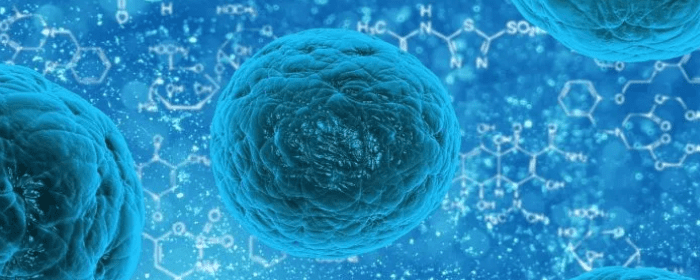

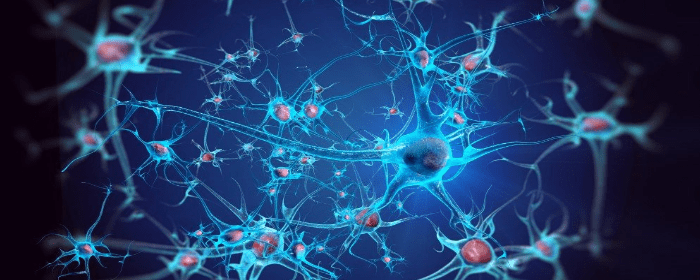
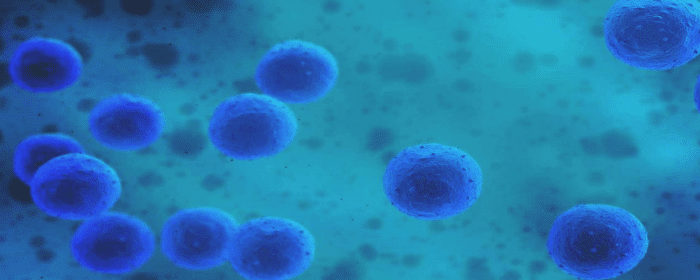
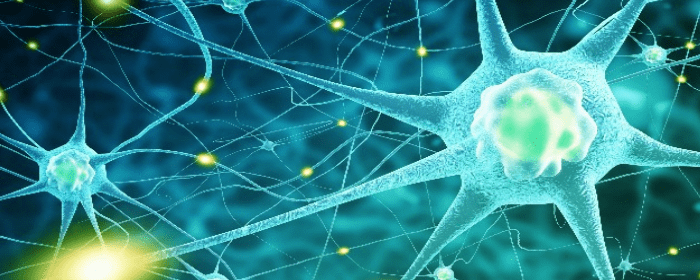

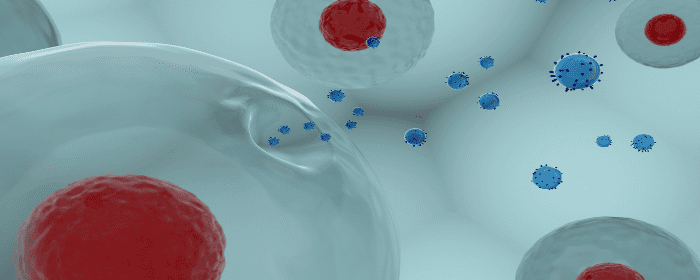
 St. Petersburg, Florida
St. Petersburg, Florida
